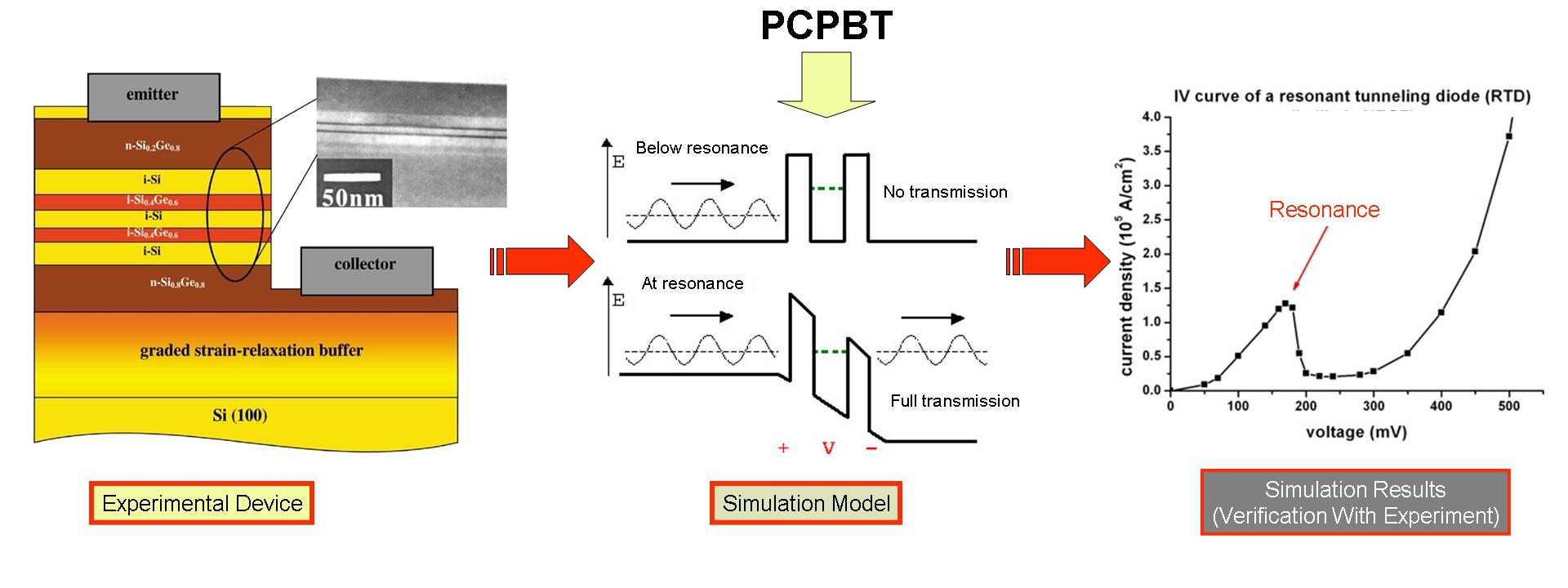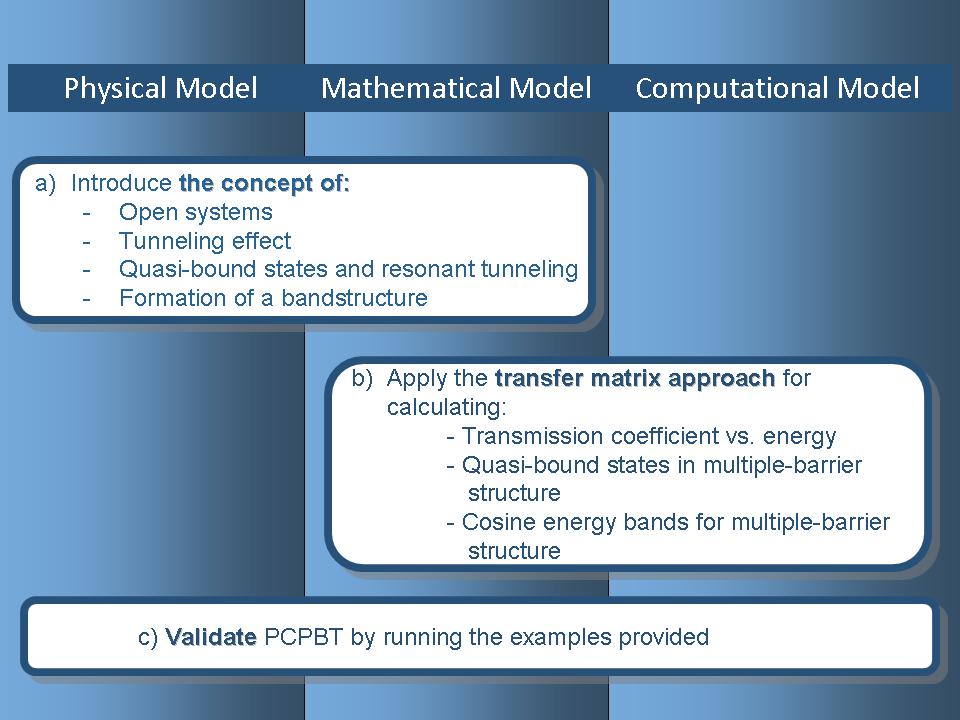By completing the Piece-Wise Constant Potential Barriers Tool Lab (PCPBT Lab) in ABACUS - Assembly of Basic Applications for Coordinated Understanding of Semiconductors, users will be able to understand a) the concept of quantum-mechanical transmissions and reflections, b) a double-barrier structure and the concept of quasi-bound states, and c) the formation of energy bands due to the interation between the wells in a multi-well structure.
The specific objectives of the PCPBT Lab are:
Recommended Reading
Users who are new to the analysis of open quantum systems, the concepts of transmission and reflection coefficient (needed for the calculation of the current in a quantum-mechanical system), the concept of resonant or quasi-bound states and the operation of resonant tunneling diode, or the formation of energy bands in multiple-well structures should consult the following resources:
1. D. K. Ferry. (2001). Quantum Mechanics: An Introduction for Device Physicists and Electrical Engineers. 2nd ed. Bristol (UK): Institute of Physics Publishing.
2. Dragica Vasileska, Stephen M. Goodnick and G. Klimeck. (2010). Computational Electronics: Semiclassical and Quantum Device Modeling and Simulation. Boca Raton, LA: CRC Press. (See especially chapter 2)
Demo
* Piece-Wise Constant Potential Barriers Tool: First-Time User Guide
Theoretical Descriptions
* Piece-Wise Constant Potential Barrier Tool MATLAB Code
Tool Verification
Comparison of PCPBT Lab and Periodic Potential Lab
Examples
1. Comparison of PCPBT Lab and Periodic Potential Lab
Exercises and Homework Assignments
1. Quantum-Mechanical Reflections: an Exercise
2. Double-Barrier Case: An Exercise
3. Quantum-Mechanical Reflections in Nanodevices: an Exercise
4. From 1 well to 2 wells to 5 wells to periodic potentials: an Exercise
5. Energy Bands as a Function of the Geometry of the n-Well Potential: an Exercise
6. Tunneling Through Triangular Barrier: an Exercise for PCPBT
7. Stationary Perturbation Theory: an Exercise for PCPBT
8. Cosine Bands: an Exercise for PCPBT
10. PCPBT: Problem Assignment for Asymmetric Barriers
Solutions to Exercises
Solutions to exercises will be provided only to instructors!
Evaluation
This test will assess the users conceptual understanding of the physical, mathematical and computational knowledge related to the calculation of transmission coefficients, resonant tunneling, and the formation of bandstructure in crystals.
Challenge
In this final challenge users will integrate what they have learned about tunneling through piece-wise constant potential barriers such as the double barrier structure in resonant tunneling diodes.
Analytical and Numerical Solution of the Double Barrier Problem

